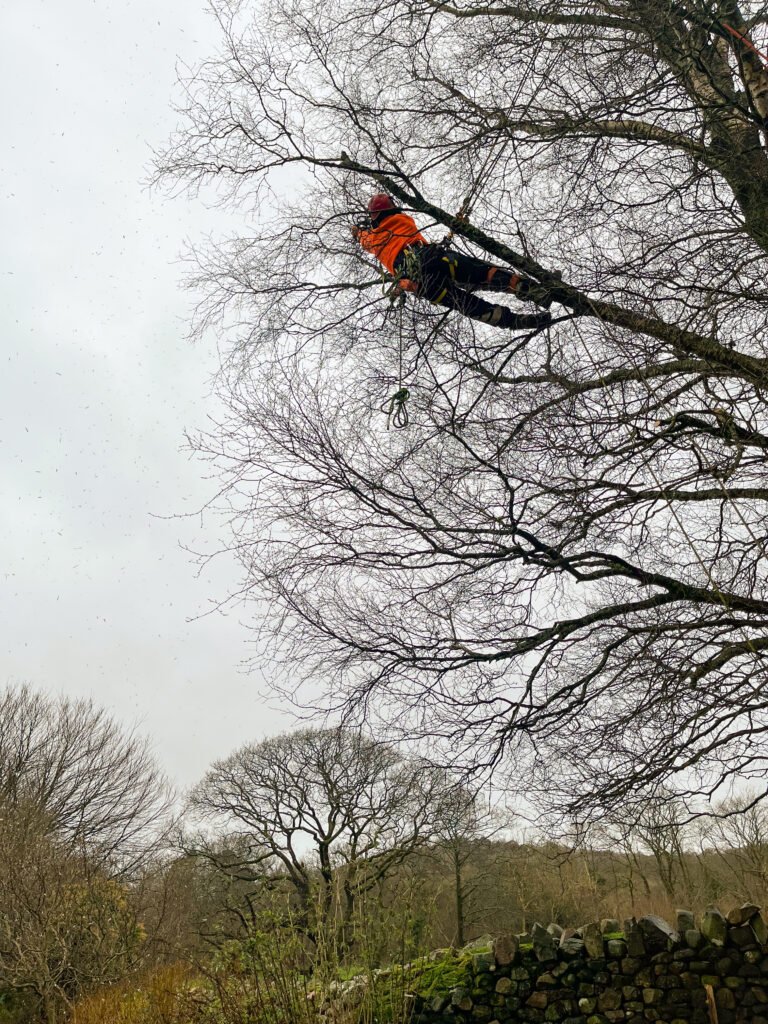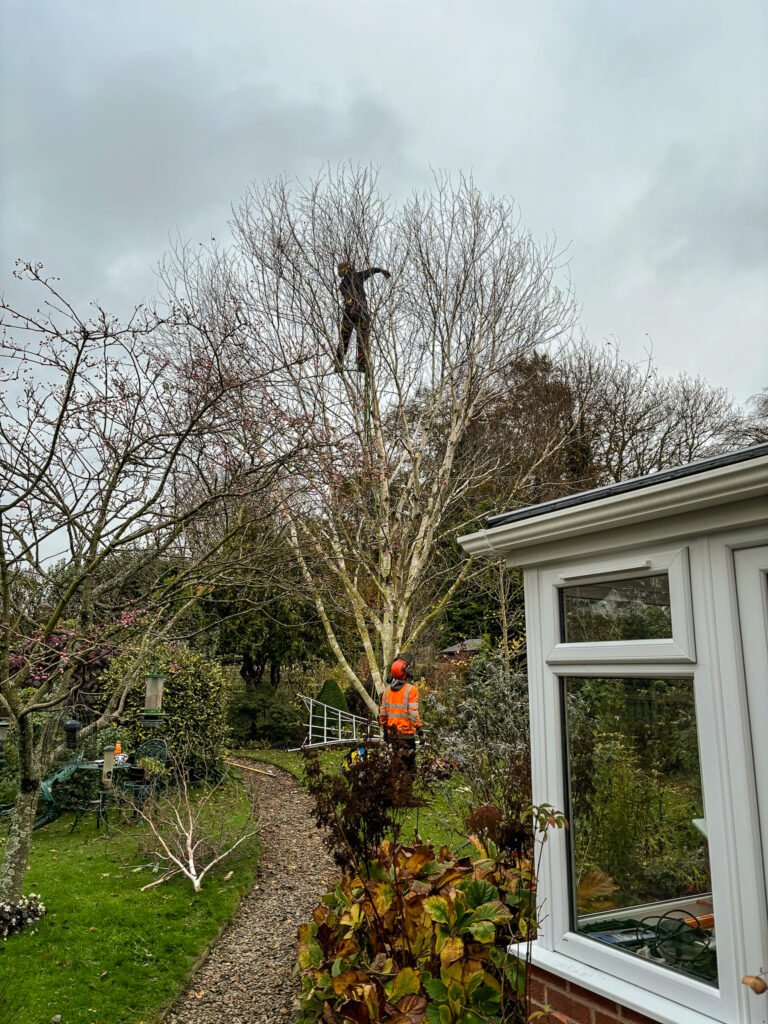A Guide for pruning Pendula, ‘Youngii’, ‘Jacquemontii’ & Multi-Stemmed Birches
Pruning Birch: These trees are among the most graceful and popular ornamental trees in gardens and landscapes. With their shimmering bark, light canopy, and elegant movement in the wind, birches bring year-round beauty with surprisingly little maintenance. However, while birches do not require heavy pruning, strategic and well-timed cuts can improve structure, manage size, and showcase their natural form.
This guide explores the best pruning practices for common ornamental birches, including Betula pendula ‘Youngii’, Betula utilis jacquemontii, and multi-stemmed forms.
Understanding Birch Growth & Why Timing Matters
Birches are known for “bleeding” sap heavily when pruned at the wrong time of year. Excess sap flow isn’t usually harmful, but it can stress the tree and increase the risk of disease.
Best Time to Prune Birch
- Mid-summer (July to early August) is ideal.
- Pruning at this time minimises sap flow and allows wounds to seal quickly.
- Avoid pruning in late winter or spring, when sap rises strongly.
A light, considered approach is key—birches respond best to minimal, selective pruning.
General Principles for Pruning Birch Trees
- Remove dead, damaged, or rubbing branches first.
- Keep cuts small—large wounds heal slowly and can lead to decay.
- Maintain the tree’s natural shape. Birch looks best with airy, open branching.
- Do not excessively thin the crown, as birch foliage is naturally light and dappled.
- Use clean, sharp tools to make smooth cuts.
Birches tend not to regenerate strongly from old wood, so avoid heavy reduction unless absolutely necessary.
Pruning Betula pendula ‘Youngii’ (Weeping Birch)
Pendula ‘Youngii’, often known as the weeping birch, is a compact ornamental form with arching, fountain-like branches. Its flowing habit means pruning must be careful and deliberate.
How to Prune ‘Youngii’
- Maintain the weeping framework.
The elegant arching branches give the tree its distinctive look. Only remove branches that are dead, rubbing, or interfering with access. - Lift the canopy if required.
Lower branches often sweep the ground. You can remove one or two of the lowest branches to raise the canopy for paths or lawns—but avoid over-lifting, which ruins the character. - Shorten overly long whips selectively.
If the tree becomes too wide, shorten a few branches back to a healthy bud, maintaining the natural droop. - Avoid topping or heavy shaping.
Harsh pruning destroys the graceful silhouette and leads to unnatural, uneven regrowth.
Pendula ‘Youngii’ tends to need little pruning beyond basic maintenance.
Pruning Betula utilis jacquemontii (Himalayan Birch)
Jacquemontii is prized for its brilliant white bark and clean form. Often grown as a feature tree, it benefits from minimal but thoughtful pruning.
How to Prune Jacquemontii
- Remove low or congested branches to highlight the stunning white trunks.
- Thin lightly to maintain an open, elegant outline.
- Avoid reducing height—birch reacts poorly to topping.
- Encourage a single dominant leader in young trees to ensure a balanced structure.
Jacquemontii naturally produces upright, tidy branches, so major shaping is rarely needed.
Pruning Multi-Stemmed Birch
Multi-stemmed birches have become extremely popular for modern gardens due to their sculptural trunks and gentle, airy canopy.
How to Maintain Multi-Stem Forms
- Choose the main stems early.
Select 3–5 strong, evenly spaced stems when the plant is young. Remove others at ground level to prevent clutter. - Clear the lower stems gradually.
Removing the lower side branches over a few years exposes the beautiful trunks and creates a clean, architectural look. - Avoid over-thinning.
Multi-stem birches rely on balanced structure—removing too many branches risks instability. - Remove inward-growing shoots to prevent congestion between the stems.
This approach preserves the sculptural quality while maintaining tree health.
Final Thoughts
Birches are naturally elegant trees that need only light, well-timed pruning to stay healthy and attractive. Whether shaping the cascading beauty of pendula ‘Youngii’, enhancing the crisp structure of jacquemontii, or refining a multi-stemmed birch, the key is to prune sparingly and in mid-summer. With gentle care, birches will reward you with movement, form, and colour that bring life to the garden all year round.
Need some help pruning your birch trees? Give us a call. We have the expertise, experience and equipment to hand to prune even the most awkwardly located trees.


